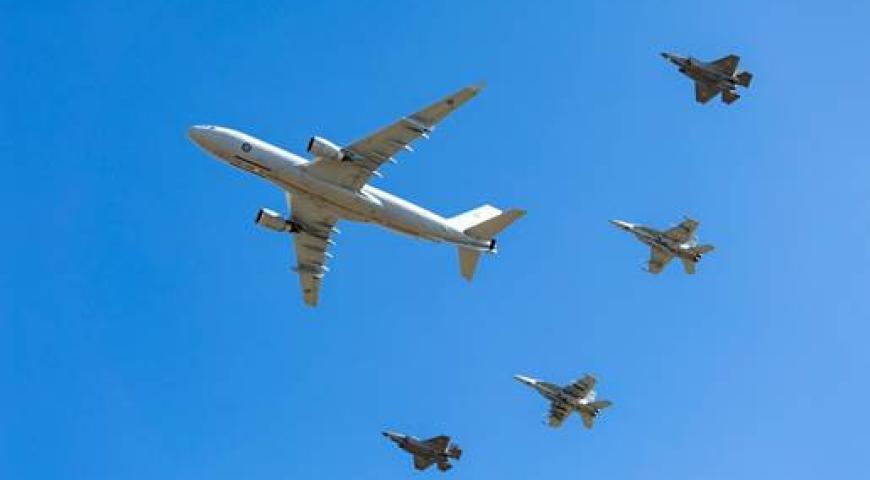BRIGADIER IAN LANGFORD- DIRECTOR GENERAL FUTURE LAND WARFARE
“People, Ideas, Machines…in that order!”
Colonel John Boyd
Introduction
Across its history, the Australian Army has adapted and transformed when faced with changing strategic circumstances, technological advancements and social reformation. Recent initiatives such as the Army 21 trials, the Hardened and Networked Army initiative and Plan Beersheba have all demonstrated Army’s commitment to modernisation over the past three decades.
Moving forward in to the early part of the next decade, Army must continue to capitalise on future reform programs including in its most recent initiative, Accelerated Warfare by ensuring that bold opportunity does not give way to modest evolution. This most recent reform program is partly focused on ensuring that platform replacement does not come at the expense of conceptual re-design; to put it simply, a new rifle must not cost Army the opportunity to re-think its concepts and methods of force employment. A way of avoiding this trap is for Army, as part of a joint and inter-agency capable ADF to concentrate its future force structure at the strategic level of command in order to avoid the conflation of tactics and operational concepts as an alternative to a true definition of how Army contributes to the military element of national power.
Army must become more strategic and jointly integrated
Australia requires a versatile, potent and modern Army that is capable of fighting as part of the joint force in a way that makes it a co-equal service-level contributor to joint operations. Arguably, in no other area is this as important as in the capability of strategic strike. Army must be able to cooperate in the joint battlespace alongside its air, maritime, cyber and space capabilities as a peer. This means being able to detect and track targets at very long distances; to be able to then develop targeting methodologies and weaponeer solutions that enable it to engage on behalf of another service as well as pass off information to enable other platforms to then prosecute at maximum range. Army must understand that it brings certain advantages to strike; it has a higher capacity to distribute across more vast areas as well as bring a greater survivability equation to the joint force. Unlike platform based assets that present high payoff targets, networked Army units can often dissolve into an urban or dense terrain battle-space where they can subsequently hide, providing the joint force commander with an ‘always on’ option in the event that the threat become too high for major capital assets to remain ‘on-station’.
Army should therefore acquire long-range precision fires, enabled by a sophisticated radar detection system that is able to integrate into a joint command and control network. Army, as part of its contribution to the joint force, must also generate an ability to access space and cyber domains in order to execute as well as facilitate cyber-strike; in this way, the Army can complement its other physical offensive action capabilities, to include Special Forces and long range fires in order to generate the capacity to genuinely frighten an adversary, give them pause before making decisions, and make them second guess themselves, effectively sowing the military seeds of their own destruction.
Army must create operational dilemmas
Army, as part of the joint force must also be able to create operational dilemmas. It should do this primarily through the generation of tempo. For the Army, setting operational theatres, designing its geometry and then commanding and controlling it as the primary supported integrator is how it spins up tempo to a point that it can out-think an adversary. Go as a joint force where they least expect us, get there faster, achieve surprise through asymmetry, and decide at the speed of ‘now’ should be managed as a seamless network.
Army, as part of an integrated joint force will increasingly need to operate on, from, and across the air, maritime, space, and cyber environments that encompasses our strategic key terrain. This includes extensive engagement over long periods with regional partners and allies in order to transfer skills, share perspectives and increase mutual understanding amongst friends and allies in the region. This will build capacity and allow Army to move into and out of operational theatres without undue attention. The ability to manage partnerships through persistent engagement also gives Army the kind of access it needs to create proxy forces, support special operations, and conduct intelligence gathering in ways that increase Australia’s understanding in these areas as well as create a ‘warm-start’ in the region prior to the commencement of hostilities.
Deterrence and Coercion
Deterrence has historically been problematic for an Army who by regional standards is numerically small and potentially vulnerable when compared to other military forces. Army, as part of the Australian Defence Force must alternatively create off-set capabilities if it is to effectively deter and/or coerce an adversary. It should do this through the generation of non-traditional capabilities and through an unconventional application of its military hardware. Attack Australia in the physical space? We will destroy you in cyberspace…Ally or actively support hostile actors or states? Be prepared to suffer defence industry arms embargoes, followed by the commencement of an unconventional warfare campaign should hostilities break out…
For Army to be able to contribute to an ‘escalation dominance’ deterrence capability, it must be able to generate off-set capabilities, specifically offensive cyber operations, maritime blockades, and a world-class special operations capability, including unconventional warfare.
Underpinning these offsets is the ability to leverage Australia’s strategic alliances through the maintenance of a credible and meaningful conventional capability including an effective intelligence gathering and technology research program. Only through offset capabilities, effective alliance management and unconventional warfare, can Army, as part of the joint force, be capable of deterring an adversary either unilaterally or as part of a coalition.
Conclusion
Strategic, social, technological and political change mean challenges for the Australian Army. Given its history and culture, the Army is well postured for this. In order to maximise these future opportunities, Army must be more strategically focussed in its force design, with an increasing focus on strategic strike, creating dilemmas for future adversaries as well focus increasingly on the setting of operational conditions through a series of deliberate shaping actions, including deterrence and coercion. Maintaining Australia’s ‘escalation dominance’ when dealing with strategic instances of brinkmanship and state-craft will be critical to meeting the challenges of the changing character of war in a period of increasing security uncertainty.
Defence Mastery
Please let us know if you have discovered an issue with the content on this page.
Comments
Start the conversation by sharing your thoughts! Please login to comment. If you don't yet have an account registration is quick and easy.




